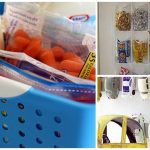

It can feel like the day is never ending when you have a small child in your care. Aside from observing their feeding and napping as well as their physical hygiene and toileting; they seem to have boundless energy and infinite curiosity. They certainly keep you on your toes, but it doesn’t have to feel as though every minute is a constant demand of your attention and time.
With just a shift in approach, you can observe their needs and behavior in a way that makes the day ordered while still very flexible and also encourage their independence and separation from you. By segmenting the day into smaller increments of time and facilitating their desire to need you less, you can free up your time and release some of the pressure on yourself as a carer. At the same time your bond and relationship with the child is strengthened and enhanced.
The key is to attempt to extend the time of a particular activity by paying close attention to detail, having the patience to explain things by pointing out features, and asking questions to encourage participation and autonomy. Children lose interest when you stop paying attention, but the attention doesn’t have to be so intense that it becomes over bearing. It is crucial to find the middle ground and combine guidance with self reliance.
Here are 10 tips for keeping a toddler busy.
1. Meal times as sign posts
Meal times are an important part of a toddler’s day. Not only do they provide the necessary sustenance that they require, but they can also take up a bit of time and become an opportunity for learning and bonding. It is a good idea to sit down for meals together. It allows you to enjoy your food and demonstrates this to the child as well. Making the effort to sit down and eat is time consuming, as it should be, but it is a significant experience. When the child starts to understand that it is breakfast time, lunch time, time for a short snack break, or dinner time, they learn to have some sort of structure to the day. It centers them and slows them down. It also provides rest and a chance for you to teach them about nutrition. Enjoying food together or a short water drinking break gives everyone a recharge and enhances bonding. It is also a good time to share ideas, thoughts, and feelings by talking to one another. Bonding over a meal is an ancient human ritual. We can make the most of it by occupying a child while also connecting with and educating them.
2. Quiet time or naps
By the time a toddler reaches the age of two, they may have already dropped their usual day nap. They don’t have to go to sleep during the day to rest; however, it is a good idea to allocate a part of the day as down-time. The best time to do this is in the afternoon after the lunchtime meal. Whether indoors or out, why not make a comfortable space to lie down, such as a picnic blanket under a tree or a pillow and blanket fort on the lounge room floor. If you’re inside, just darken the room a little. You can read a favorite book together or watch a movie. Again, it is a good opportunity to talk or have quiet play. Try to do an activity that requires little physical exertion and concentration. Simple activities include watching the clouds drift by, staring up at the leaves in the trees; watching shadows on the walls, and just relaxing. On some days, they may fall asleep. Other days, it is just a much needed rest and another way to segment the day and recharge from the morning activities to prepare for the afternoon routine. No matter what you have planned for the day, making time to have a rest is important so that both you and the child can recover some energy and prevent either of you from becoming over tired.
3. Getting outdoors
Going outside is a great way to keep a toddler busy. Whether it is playing in the backyard or going to a park or the beach; fresh air, nature, weather and wildlife are all valuable stimuli for a child. Play doesn’t have to be structured all the time. Just exploring and discovering the ground, the sky, the water, and the weather is magical for a child and excellent for their health. More structured play can include riding a bike, kicking a ball, or flying a kite. Free play such as looking for objects like shells, rocks, and flowers and collecting them in a bucket is fun too. Observing insects, birds, and other creatures can also be very exciting. Sometimes you can spend an entire day exploring and having adventures outdoors. Other days, it may be a short stroll to the letter box or a cup of tea on the balcony or porch while they meander beside you for half an hour. Having a little bit of outside time each day is beneficial. It doesn’t have to be a sunny day either. Nothing is more joyful to a child than putting on their rain coats and gum boots, taking their umbrellas, and playing in the rain – splashing in puddles and discovering mud. Getting outside can also improve sleep in the afternoon and at bedtime.
4. Little helpers
Including a child in your day to day activities can become play and occupy some time. Keeping a toddler busy this way will distract their busy minds and teach them some life skills in the process. Get them to fetch things and put things away. Handing you pegs while you hang out washing, putting things in the bin, helping you to water plants and tend the garden, or prepare meals, as well as accompanying you on errands or shopping trips, all build excellent aptitudes. Whatever you need to do during the day while they are in your care can also become an activity for them. Children are very willing helpers and even just explaining what you are doing and making them feel included is enough to keep them intrigued. Even very small children understand handing objects backwards and forwards or placing objects into a vessel. The older they get, the more responsibility and complex jobs you can entrust them with. Acknowledging your daily routines as though they are a game is a beneficial way of keeping a toddler busy. Soon enough, they will be following basic instructions and taking some of the burden away from you. Nothing is more rewarding than when a child becomes involved in their own care and starts doing basic things for themselves.
5. Open play toys
Every child loves toys. A bit of forward planning and clever purchasing can fire up their imagination. Open play toys such as blocks, figurines, puzzles, and musical instruments allows them to make up their own games and lose themselves in play. You can sit with them to start with and show them (often non-verbally) how to play with toys that require their imagination and creativity. When they are immersed in play, it is valuable to walk away and just observe them. Leaving toys in an accessible area, perhaps in containers marked with a sign and a picture, allows them to choose what they want to do. Playing with household objects that aren’t toys are attractive to toddlers also. Give them plastic containers, kitchen utensils, shredded paper, ribbons, and empty packets or boxes. As long as it is age appropriate and they are closely supervised for their own safety, these objects are great as sensory play and can keep them busy. You can also make lots of sensory play toys like these.
6. Reading and art
Children can never have too many books and art supplies. Establishing a library for them with shelves that they can reach and a comfortable place to sit or lie gives them constant and easy access to books. From the time they can grasp things in their hands, children should have access to books. There are a multitude of board and fabric books available for small children. There are also quiet books you can purchase or make that are not only effective toys for keeping a toddler busy, they also teach them skills like tying laces, doing up buttons and zippers, and sorting objects. A blackboard or white board, scrapbooks, and age appropriate crayons, pencils, markers, and paints can inspire them to express themselves artistically. You can do an infinite amount of activities and art with children, like trace and color their hands and feet, draw their favorite toys or cartoon characters, draw their family and friends, as well as experiment with shapes, colors, numbers and the alphabet. They don’t have to be able to read in order to benefit from the exposure to signs and symbols that they will use when they get older. Observing you drawing and writing is fascinating and becomes familiar. Let them scribble and doodle freely. Take a box of chalk outside and let them draw on the ground then stamp the pictures away with your feet or brush them away with a hand broom. Sticker books are also a lot of fun. Whether it is making up stories with stickers on scrap paper or doing more structured activities in a sticker book, these too can be educational and enjoyable. Reading and art is an opportunity for storytelling. Another wonderful idea is story stones. You can forage for your own flat pebbles at the beach or in a park, then draw a picture on each stone with some permanent markers. Put the stones in a fabric bag or cardboard box and let the child draw one stone at a time. Describe the picture and start a story. An older child can join in the fun too. Pick the next stone and continue the story. The possibilities are endless.
7. Water play and bathing

Children love the water. You can get really creative with water play. Water play tables are a great investment and are easy to store and clean. On warm days, you don’t have to go to the pool or beach for a swim, you can set up your child in the yard or balcony with containers of water to help them cool off and play. Making bath time fun is a must also. Toys that allow them to fill up and pour, squirt, splash, and dunk will provide endless interest and fun. You can set up a container with water and some child-friendly bubbles and get them to hand-wash toys. Blowing bubbles is timeless and these days there are lots of different options for making them. You can also set up a blow-up pool or sprinkler and let them play in the water when the weather is warm. Keeping a toddler busy with water play has many benefits for their development. It is also relaxing for both you and the child.
8. Visiting
It is easy to become reluctant to take children out to someone’s home. We tend to prefer to take young children out where they can run wild, make a mess, and make lots of noise. However, keeping a toddler busy by giving them the opportunity to understand what is expected of them in public doesn’t have to be traumatic. Short visits are easier to manage if you take them to a place where there is a more formal relationship and less familiarity. A whole day spent with grandparents and other relatives provides a little more freedom. Children benefit from interaction with other adults and children. From an early age, they can understand how to manage their emotions and behavior if they are guided. They can always take along something special to occupy them, like a favorite toy or book. Perhaps they can even give a gift that they’ve chosen or made themselves to present to your host. This encourages them to participate and socialize in a positive way.
9. TV and electronic devices
There is a lot of guilt associated with letting children watch television or use a computer or electronic device, but these can be tools to help you keep a toddler busy and can prove to be educational as well as skill building. In moderation, these devices can allow children to observe someone else’s creativity and also introduce them to a number of concepts and ideas to accelerate their learning. Touch-screen devices in particular are equipped with many applications that allow children to interact and learn problem solving skills. Quiet time is a good opportunity to introduce these to older children who prefer not to nap. They are also effective when waiting for a meal to be served while dining out or to keep them occupied when you have work to do or need to focus your attention on something or someone else. It is also an opportunity to teach children boundaries and limitations. The hardest part of giving children access to these devices is turning them off or taking them back. There is bound to be a tantrum or two. Explain to your children that they can enjoy them for a short time and then must hand them back when that time is over. Getting them to practice that habit is also an excellent development tool.
10. Doing nothing
Carers of young children put a lot of pressure on themselves. We put pressure on each other too. Sometimes, you don’t have to do anything at all. Allowing children to lead you and being guided by their needs brings us to the realization that all they really need and want is our company and our affection. Everything can be a game and everything can be an opportunity to learn. We don’t have to load the moment with constant activity and forced interaction. Just be. Sometimes just connecting with them, letting them crawl on you and cuddle you, or letting them sit beside you to have a conversation on their level, is enough. Sometimes, the less we do the more we benefit.
Before you know it the time has flown and they’ve grown up. Enjoy their babyhood. It is fleeting.
The post 10 Tips For Keeping A Toddler Busy appeared first on Lifehack.
Source: lifehack.org



